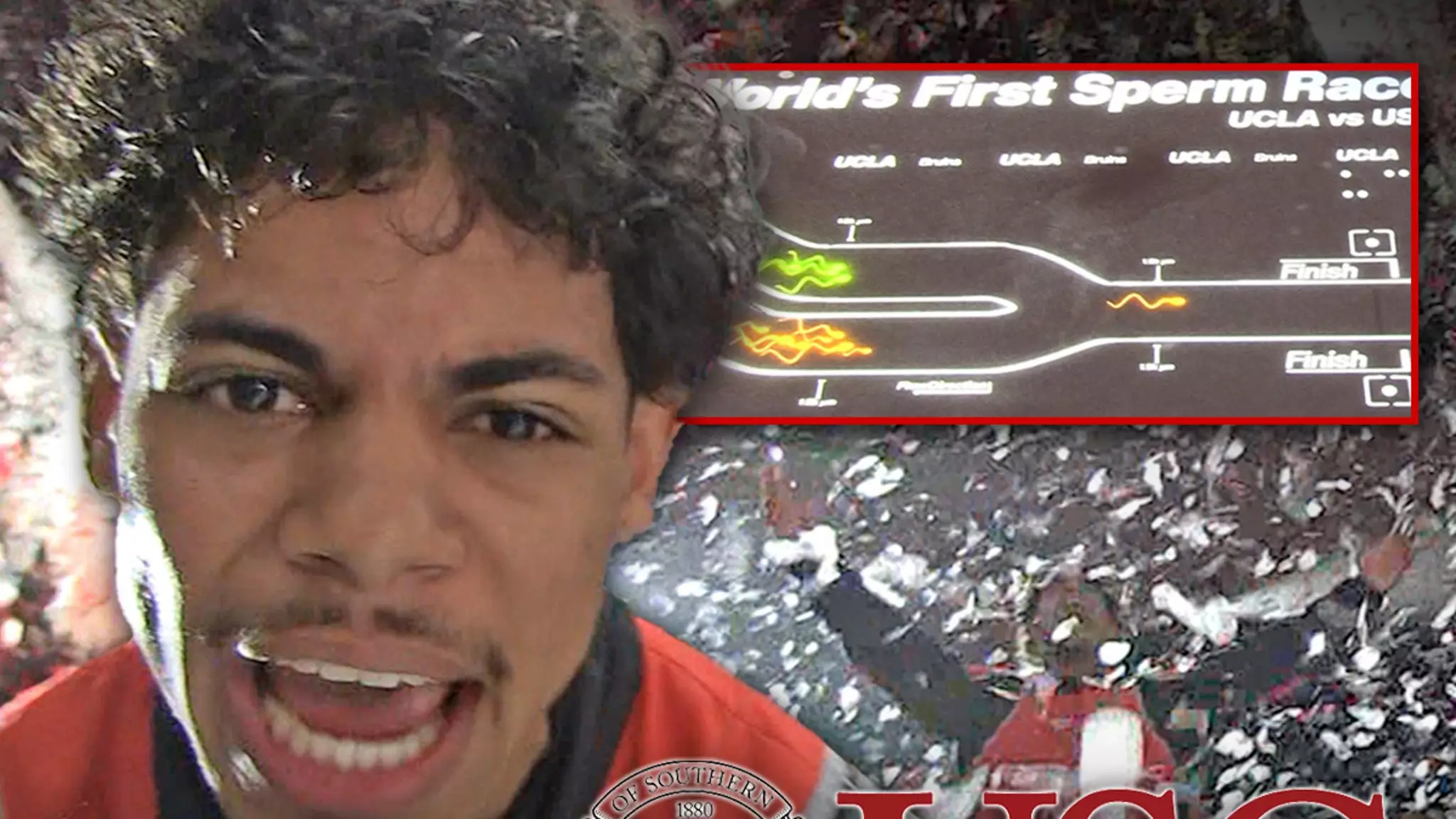The concept of a sperm race may strike many as absurd or even juvenile, yet it encapsulates a pressing issue—male fertility rates. Hosted in downtown Los Angeles, the first-ever sperm race organized by Eric Zhu and his innovative team transitions from mere spectacle to a vehicle for public discussion. Drawing participants from two notable universities, USC and UCLA, the event does more than entertain; it challenges societal perceptions surrounding men’s reproductive health and sparks broader conversations about fertility.
The Stars of the Night: Tristan vs. Asher
At the center of this eccentric race were two competitors, Tristan from USC and Asher from UCLA. Each participant embodied a caricature of athleticism, raising the stakes of this outrageous contest. As the event unfolded, spectators witnessed an exhilarating race where the strength and speed of these men’s ‘swimmers’ were visually represented in tubes—an idea that balances humor and seriousness. Surprisingly, what could be dismissed as folly instead shone a light on issues that impact men’s health more significantly than people might realize.
As the race progressed, cheers intensified as one competitor surged ahead, likened to Usain Bolt in his prime. The exuberant reactions from both teams accentuated the competitive spirit surrounding the event. Ultimately, Tristan emerged victorious, triumphantly celebrating with confetti showers—a moment both ridiculous and remarkable in its message.
Deeper Implications of Humor and Awareness
While humor undeniably permeated the event, beneath the surface lay a sincere motivation to confront the declining fertility rates among men, a topic often cloaked in stigma. The playful framing of such an unconventional race presents an opportunity to normalize discussions surrounding male reproductive health. Tristan’s post-race comments echoed the essential message of positivity, urging a broader audience to consider these health issues that remain largely unaddressed.
Moreover, the presence of celebrity Ty Dolla $ign adds an intriguing layer to the narrative. Not only did his appearance heighten the entertainment factor, but it also bridged culture and serious issues of health, facilitating connection through shared laughs and exposure to pressing conversations.
The Cultural Resonance of Unconventional Events
In a digital age where virality is the new currency, unusual events like the sperm race stand to engage and educate in innovative ways. By shifting the focus from traditional approaches to awareness, such events can captivate audiences who might otherwise remain indifferent to grave health discussions. Nonetheless, it challenges audiences to examine their values. If a lighthearted race can prompt dialogue about fertility—a subject typically avoided in serious contexts—then perhaps society needs more of such audacious formats.
As the dust settles on this ambitious undertaking, the implications of the sperm race will likely ripple through conversations on fertility for some time. More than just a whimsical battle for “spunk supremacy,” the event champions a message of health awareness, creativity in advocacy, and the liberty to discuss topics deemed taboo in society. Ultimately, it enshrines the indelible spirit of competition while forging a path towards understanding and acceptance.

